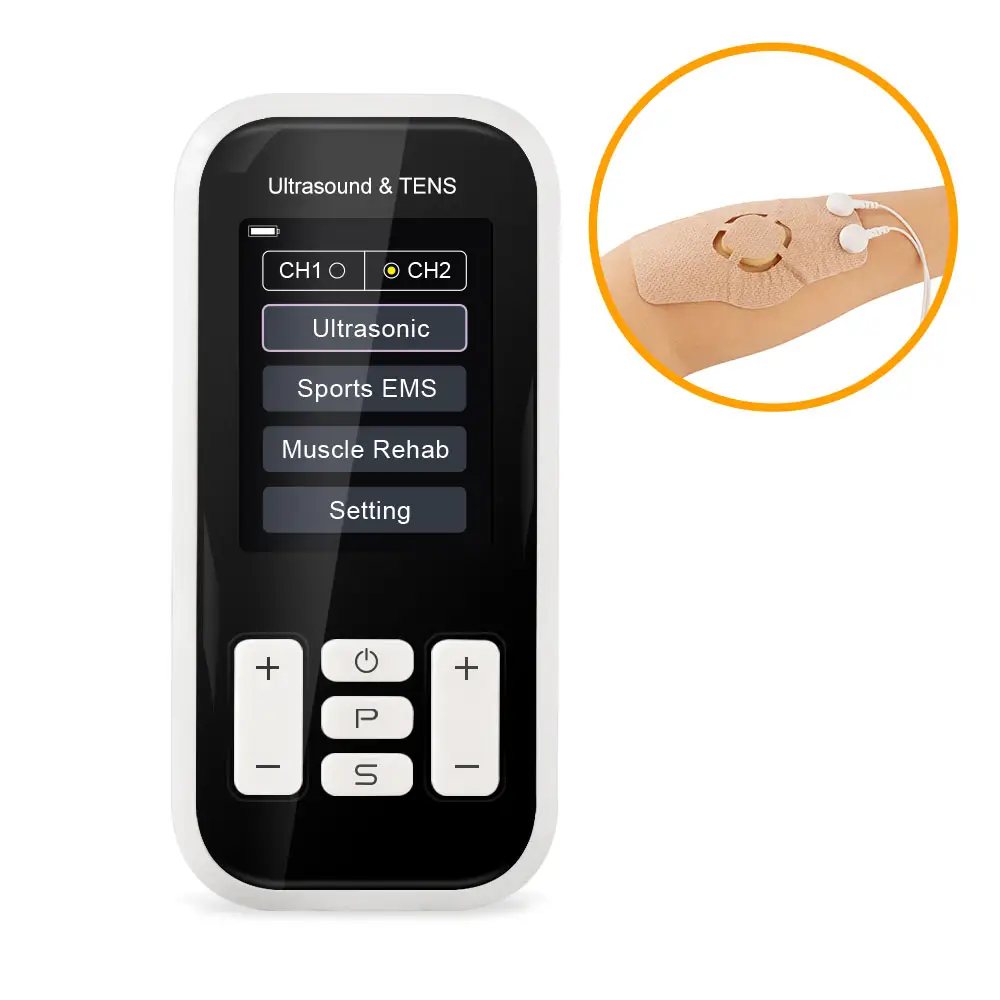Understanding the Science Behind Therapeutic Ultrasound Treatment
Ultrasound therapy has emerged as a powerful non-invasive treatment modality in modern medicine, particularly for managing pain and inflammation. This sophisticated therapeutic approach utilizes sound waves at frequencies beyond human hearing to penetrate deep into soft tissues, promoting healing and providing relief from various musculoskeletal conditions. As medical technology continues to advance, ultrasound therapy has proven itself to be an invaluable tool in physical therapy clinics, rehabilitation centers, and sports medicine facilities worldwide.
The therapeutic effects of ultrasound waves work through two primary mechanisms: thermal and non-thermal. These mechanisms create profound physiological changes within the treated tissues, leading to reduced pain, decreased inflammation, and accelerated healing processes. Understanding how ultrasound therapy functions at the cellular level helps explain its effectiveness in treating a wide range of conditions, from chronic joint pain to acute soft tissue injuries.
The Fundamental Mechanisms of Ultrasound Therapy
Thermal Effects on Body Tissues
When ultrasound waves travel through the body's tissues, they generate microscopic vibrations that produce heat. This therapeutic warming effect penetrates deep into the target area, reaching depths that traditional heating pads cannot achieve. The controlled increase in tissue temperature leads to improved blood circulation, enhanced metabolism, and greater tissue elasticity. These thermal effects are particularly beneficial for treating chronic conditions and preparing tissues for physical therapy or exercise.
The heat generated by ultrasound therapy can reach temperatures between 40-45 degrees Celsius in the treated area, which is optimal for therapeutic benefits without causing tissue damage. This precise temperature control allows practitioners to target specific areas while maintaining patient comfort and safety throughout the treatment session.
Non-Thermal Mechanical Effects
Beyond its heating properties, ultrasound therapy creates mechanical effects through a process called cavitation. This phenomenon occurs when the sound waves create microscopic bubbles in the tissue fluids, which then expand and contract rapidly. This mechanical action helps break down scar tissue, reduce swelling, and accelerate the healing process at the cellular level.
The mechanical effects also stimulate cell membrane permeability, allowing for better nutrient exchange and waste removal at the cellular level. This enhanced cellular activity promotes faster tissue repair and regeneration, making ultrasound therapy particularly effective for acute injuries and post-surgical recovery.
Clinical Applications and Treatment Protocols
Musculoskeletal Conditions
Ultrasound therapy shows remarkable effectiveness in treating various musculoskeletal conditions. It's particularly beneficial for conditions such as tendinitis, bursitis, and muscle strains. The combination of thermal and non-thermal effects helps reduce pain while promoting tissue healing and flexibility. Physical therapists often incorporate ultrasound therapy into treatment plans for patients with chronic conditions like frozen shoulder or plantar fasciitis.
Treatment protocols typically involve sessions lasting between 5-10 minutes per area, with the exact duration depending on the condition's severity and the tissue depth being targeted. The frequency of treatments may vary from daily sessions for acute conditions to 2-3 times per week for chronic issues.

Post-Injury Recovery
In the context of injury recovery, ultrasound therapy plays a crucial role in accelerating the healing process. When applied during the subacute phase of injury, it helps manage inflammation while promoting proper tissue repair. The treatment can be particularly effective in reducing recovery time for sports-related injuries and preventing the formation of excessive scar tissue.
The therapy's ability to increase blood flow and cellular activity in the injured area makes it an excellent tool for maintaining tissue health during the recovery period. This enhanced circulation helps deliver essential nutrients and oxygen to the healing tissues while removing metabolic waste products more efficiently.
Optimizing Treatment Effectiveness
Treatment Parameters and Settings
The success of ultrasound therapy largely depends on selecting the appropriate treatment parameters. Factors such as frequency, intensity, and duration must be carefully calibrated based on the specific condition being treated and the tissue depth involved. Higher frequencies (3 MHz) are typically used for superficial tissues, while lower frequencies (1 MHz) penetrate deeper into the body.
Practitioners must also consider the continuous versus pulsed delivery modes. Continuous ultrasound is preferred for chronic conditions requiring thermal effects, while pulsed ultrasound is better suited for acute injuries where inflammation management is the primary goal.
Integration with Other Therapies
Ultrasound therapy often yields the best results when integrated into a comprehensive treatment approach. Combining it with other therapeutic interventions such as manual therapy, therapeutic exercise, and proper rest can create synergistic effects that enhance overall treatment outcomes. This multimodal approach allows for better management of both symptoms and underlying conditions.
The timing and sequence of different therapeutic interventions can significantly impact treatment success. For instance, using ultrasound therapy before exercise can help prepare tissues for movement, while post-exercise application can aid in recovery and pain management.
Safety Considerations and Contraindications
Patient Assessment
Before initiating ultrasound therapy, thorough patient assessment is essential to ensure safety and appropriateness of treatment. This includes evaluating the patient's medical history, current condition, and any potential contraindications. Special attention must be paid to areas with reduced sensation, circulatory problems, or active infection.
Practitioners must also consider the presence of medical devices, such as pacemakers, and avoid treating areas near them. Pregnancy, malignant tumors, and acute inflammation are other important contraindications that require careful consideration.
Treatment Monitoring
During ultrasound therapy sessions, continuous monitoring of patient response is crucial. Practitioners should maintain regular communication with patients about their comfort levels and any sensations experienced during treatment. This feedback helps ensure the treatment intensity remains therapeutic without causing discomfort or tissue damage.
Regular assessment of treatment outcomes helps practitioners adjust parameters as needed and ensure the therapy continues to meet its intended goals. Documentation of these responses and adjustments is essential for tracking progress and optimizing future treatments.
Frequently Asked Questions
How Long Does a Typical Ultrasound Therapy Session Last?
A typical ultrasound therapy session usually lasts between 5-10 minutes per treatment area. The exact duration depends on the condition being treated, the size of the area, and the specific protocol being followed. Some treatments may require multiple areas to be treated in one session, which could extend the total treatment time.
What Should I Expect During an Ultrasound Therapy Treatment?
During treatment, you'll feel a cooling gel applied to your skin, followed by gentle pressure as the ultrasound wand is moved over the treatment area. You might experience a mild warming sensation, but the procedure should not be painful. The therapist will maintain constant movement of the wand to ensure even distribution of the ultrasound waves.
How Many Sessions of Ultrasound Therapy Are Typically Needed?
The number of required sessions varies depending on your condition and its severity. Acute conditions might show improvement in 5-10 sessions, while chronic conditions may require more extended treatment periods. Your healthcare provider will develop a customized treatment plan based on your specific needs and response to therapy.
Can Ultrasound Therapy Be Combined with Other Treatments?
Yes, ultrasound therapy can be effectively combined with other treatment modalities such as physical therapy, exercise, manual therapy, and other forms of pain management. In fact, combining treatments often leads to better outcomes as each modality addresses different aspects of the healing process.





